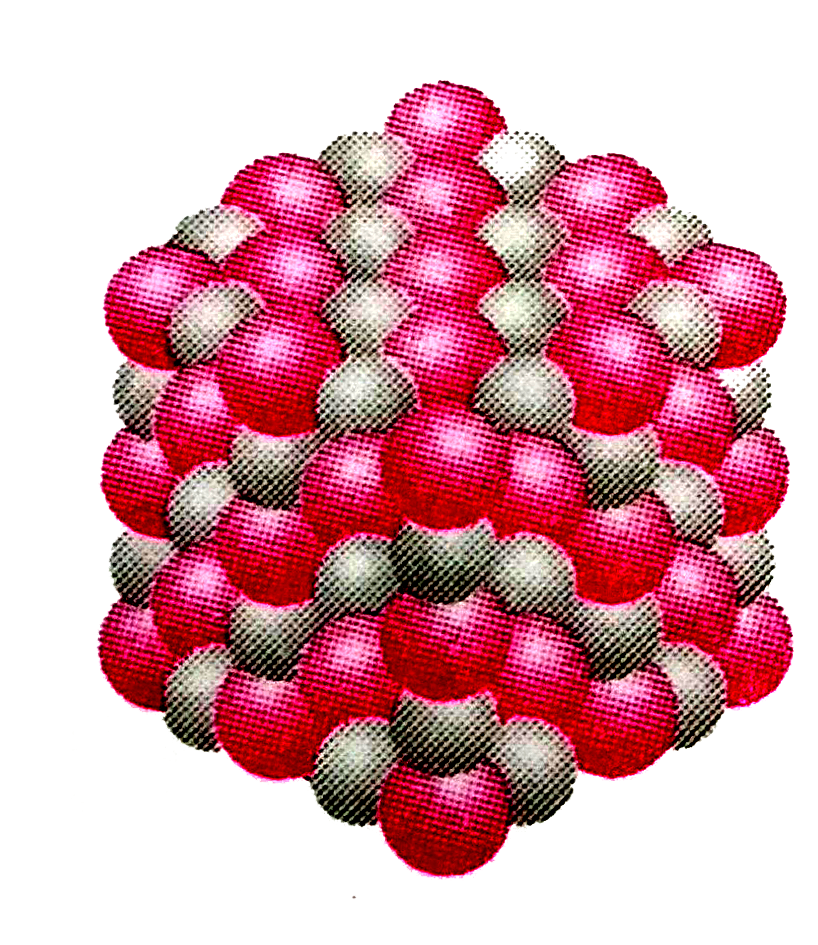Assertion: If λoNa+λoCl− are molar limiting conductivity of the sodium and chloride ions respectively, then the limiting molar conductivity for sodium chloride is given by the equation: ∧oNaCl=λoNa++λoCl−.
Reason: This is according to Kohlrausch law of independent migration of ions.
if both assertion and reason are true and the reason is the correct explanation of the assertion.
If both assertion and reason are true but reason is not the correct explanation of the assertion.
If assertion is true but reason is false
If the assertion and reason both are false.
The correct Answer is:A
According to Kohlrausch's law, "Limiting molar conductivity of an electrolyte can be represented as the sum of the individual contributions of the aion and cation of the electrolyte".
Topper's Solved these Questions
- ELECTROCHEMISTRYBOOK - ERRORLESS CHAPTER - ELECTROCHEMISTRYEXERCISE - Ordinary Thinking Objective Questions (Cell constant and Electrochemical cells)
76 Videos
- ELECTROCHEMISTRYBOOK - ERRORLESS CHAPTER - ELECTROCHEMISTRYEXERCISE - Ordinary Thinking Objective Questions (Corrosion)
6 Videos
- ELECTROCHEMISTRYBOOK - ERRORLESS CHAPTER - ELECTROCHEMISTRYEXERCISE - Ordinary Thinking Objective Questions (Faradays law of electrolysis)
94 Videos
- D & P-BLOCK ELEMENTSBOOK - ERRORLESS CHAPTER - D & P-BLOCK ELEMENTSEXERCISE - JEE Section (Numeric answer type questions)
2 Videos
- ENVIRONMENTAL CHEMISTRYBOOK - ERRORLESS CHAPTER - ENVIRONMENTAL CHEMISTRYEXERCISE - CRITICAL THINKING (Objective question )
16 Videos
Similar Questions
Calcualting limiting molar conductivity: Calculate the limiting molar conductivity of acetic acid at 298K Given that at that temperature the limiting molar conductivites infinit dilution of hydrochloric acid, sodium chloride and sodium acetate are 426,126 and 91Scm92)mol−1.
Strategy: A0m for electroyles is obtained by using Kohlrausch law of independent migration of ions
View SolutionCalculate limiting molar conductivity of CaSO4 given that limiting molar conductivity of calcium and sulphate ions are 119.0 and 160.0 S cm2mol−1 respectively.
View Solution
Knowledge Check
Assertion : ∧∘NaCl=λ∘Na++λ∘Cl−
Reason : This is according to Kohlrausch's Law of independent migration of ions.AIf both assertion and reason are correct and reason is correct explanation for assertion.BIf both assertion and reason are correct but reason is not correct explanation for assertion.CIf assertion is correct but reason is incorrect.DIf assertion and reason both are incorrect.If a is the edge length of unit cell of sodium chloride, the distance between the nearest Na+andCl− ions is
AaB√2aCa2D√3aWhich of the following expressions correctly represents the equivalent conductance at infinite dilution of AlSO43. Given that ∘ΛAl3+ and ∘ΛSO2−4 are the equivalent conduactance at infinite dilution of the respective ions?
A2λ∘Al3++3λ∘SO2−4Bλ∘Al3++λ∘SO2−4Cλ∘Al3++λ∘SO24×6D13λ∘Al3++12λSO2−4
The conductivity of molten KCl is due to the movement of K⊕ and Clc− ions.
View SolutionPacking of Na+ and Cl− ions in sodium chloride is depicted by the given figure. Choose the correct option regarding formula mass of sodium chloride.

View SolutionIf rNa+andrCl− represent the radii of Na+andCl− ions respectively and n is the number of NaCl units per unit cell, derive an expression for molar volume of the crystal in terms of rNa+,tCl− and n.
View SolutionrNa+ and rCl− represent radius of Na+ and Cl− ions respectively. If 'n' is the number of NaCl units per cell then give the eqution you will use to obtain molar volume.
View SolutionThe questions consist of two atatements each, printed as Assertion and Reason. While answering these questions you are required to choose any one of the following four responses :
Assertion : According to Kohlrausch's law the molar conductivity of a strong electrolyte at infinite dilution is sum of molar conductivities of its ions.
Reason : The current carried by cation and anion is always equal.
View Solution
